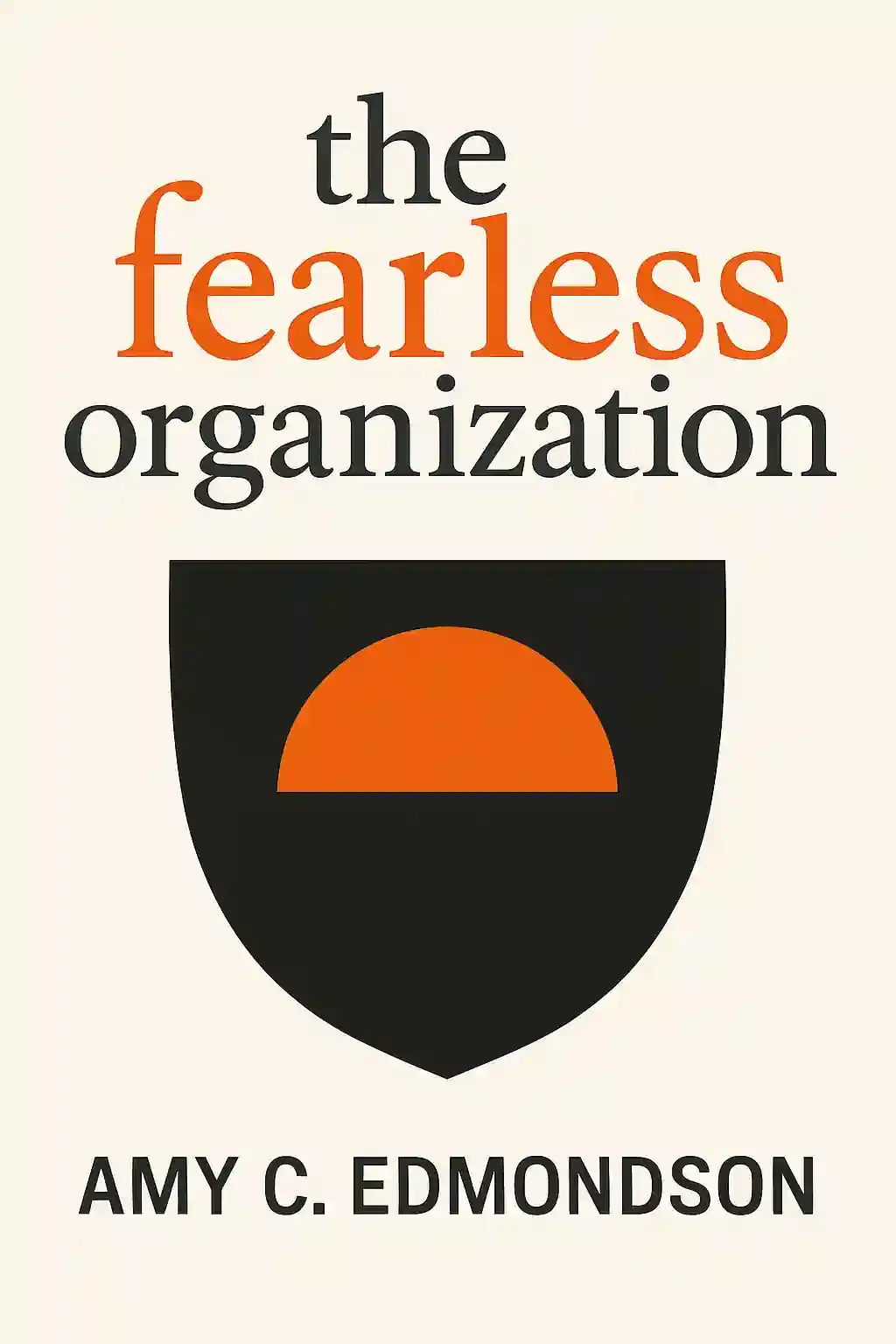What is
The Fearless Organization by Amy C. Edmondson about?
The Fearless Organization explores how psychological safety—a workplace culture where employees feel safe to speak up, take risks, and collaborate—drives innovation and learning. Amy C. Edmondson provides a practical framework for leaders to foster environments where teams can voice ideas, admit mistakes, and solve problems collectively, backed by real-world examples from industries like healthcare and tech.
Who should read
The Fearless Organization?
Leaders, managers, HR professionals, and anyone responsible for team performance or organizational culture will benefit from this book. It’s particularly valuable for industries prioritizing innovation (e.g., tech, healthcare) and organizations navigating rapid change or toxic workplace dynamics.
Is
The Fearless Organization worth reading?
Yes. Edmondson’s research-backed insights and actionable toolkit make it essential for building high-performing teams. The book bridges academic theory and real-world application, offering case studies from companies like Google and Pfizer that demonstrate psychological safety’s impact on outcomes.
What is psychological safety, and why does it matter?
Psychological safety is a shared belief that interpersonal risks, like questioning decisions or admitting errors, won’t lead to punishment. Edmondson argues it’s critical for learning, innovation, and adaptability in today’s knowledge economy, where silence and fear stifle progress.
What is the “Leader’s Toolkit” in
The Fearless Organization?
Edmondson’s three-step framework helps leaders cultivate psychological safety:
- Setting the Stage: Clarify expectations about uncertainty and interdependence.
- Inviting Participation: Ask open-ended questions and create structured feedback channels.
- Responding Productively: Acknowledge input, destigmatize failure, and address violations.
How does
The Fearless Organization address failure?
The book reframes failure as a learning opportunity rather than a blame-driven event. Leaders are urged to model vulnerability, analyze mistakes collaboratively, and focus on future solutions—key for industries like healthcare where transparency saves lives.
What are key examples of fearless organizations in the book?
Edmondson highlights Pixar’s “Braintrust” feedback sessions, where candid critiques improve films, and Google’s Project Aristotle, which identified psychological safety as the top driver of team success. Conversely, failures like the Volkswagen emissions scandal illustrate the cost of fear-based cultures.
How does
The Fearless Organization compare to Edmondson’s other works?
While Teaming (2012) focuses on collaboration in dynamic environments, this book delves deeper into the cultural conditions enabling effective teamwork. It expands on her earlier research with actionable strategies for leaders.
What are criticisms of
The Fearless Organization?
Some argue the framework oversimplifies complex organizational dynamics or requires sustained leadership commitment to implement. However, Edmondson acknowledges these challenges and provides guidance for incremental, context-specific adoption.
Why is
The Fearless Organization relevant in 2025?
With remote work, AI integration, and rapid market shifts, psychological safety remains critical. The book’s principles help organizations adapt to hybrid teams, ethical AI deployment, and employee well-being demands—trends dominating the 2025 workplace.
What are key quotes from
The Fearless Organization?
- “Silence is expensive”: Unspoken ideas cost organizations innovation and problem-solving.
- “Make it safe to speak up, and then insist that people do so”: Leaders must actively solicit input.
How to apply
The Fearless Organization’s ideas to career growth?
Employees can use Edmondson’s principles to advocate for open dialogue, seek feedback, and propose solutions. For leaders, adopting the toolkit improves team retention, creativity, and agility—key for career advancement in leadership roles.








